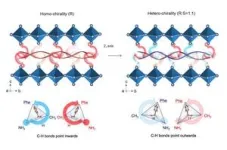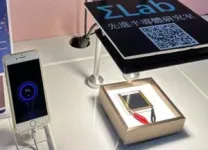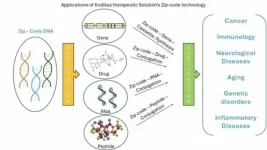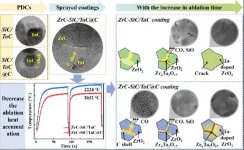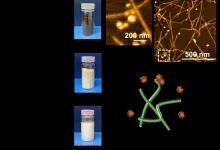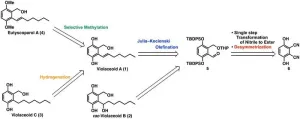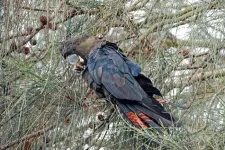(Press-News.org) A research team led by the School of Engineering of the Hong Kong University of Science and Technology (HKUST) has constructed an unprecedented chiral-structured interface in perovskite solar cells, which enhances the reliability and power conversion efficiency of this fast-advancing solar technology and accelerates its commercialization.
A perovskite solar cell (PSC) is a type of solar cell that includes perovskite-structured compound materials, which are inexpensive to produce and simple to manufacture. Unlike conventional silicon solar cells that require expensive high-temperature, high-vacuum fabrication processes, perovskites can be easily made into thin films using various printing techniques at low cost. The performance of PSCs has climbed very rapidly in recent years, but there are still significant barriers to commercialization, particularly concerning their various stability aspects under real-world conditions. An outstanding challenge was the insufficient adhesion between the different layers of the cells, resulting in limited interfacial reliability.
To address this issue, Prof. ZHOU Yuanyuan, Associate Professor of the Department of Chemical and Biological Engineering (CBE) at HKUST, and his research team got inspiration from the mechanical strength of natural chiral materials and constructed an unprecedented chiral-structured interface in PSCs, unlocking very high reliability.
The team inserted chiral-structured interlayers based on R-/S-methylbenzyl-ammonium between the perovskite absorber and electron transport layer to create a strong, elastic heterointerface. The encapsulated solar cells retained 92% of their initial power conversion efficiencies after 200 cycles between −40°C and 85°C for 1,200 hours, tested under the International Electrotechnical Commission (IEC) 61215 solar cell standards.
“The intriguing mechanical properties of chiral materials are associated with the helical packing of their subunits, which resembles a mechanical spring,” said the first author of this work, Dr. DUAN Tianwei, currently a Research Assistant Professor in the CBE Department at HKUST and a previous Research Grants Council postdoctoral fellow. “Incorporating a chiral-structured interlayer at the crucial device interface makes the perovskite solar cell more mechanically durable and adaptable under various operational states,” she added.
“It is really the dawn for the commercialization of perovskite solar cells. Given the high efficiencies of these cells, if we could ultimately overcome the reliability issue, billions of energy markets will be seen,” said Prof. Zhou.
This breakthrough holds great promise for the future of solar energy. With the potential for enhanced reliability and power conversion efficiency, future perovskite solar panels could become even more dependable in various weather conditions, ensuring continuous electricity generation over extended periods.
The team’s research work, titled “Chiral-Structured Heterointerfaces Enable Durable Perovskite Solar Cells”, was recently published in prestigious journal Science. The paper was co-written by Dr. Duan (the lead first author) and Prof. Zhou (the lead corresponding author), as well as collaborators from the US National Renewable Energy Laboratory, Hong Kong Baptist University, and Yale University.
END
HKUST engineering researchers enhance perovskite solar cells durability with first-of-its-kind chiral-structured “springy” interface
2024-08-09
ELSE PRESS RELEASES FROM THIS DATE:
GSA announces 2024 Award Winners honoring excellence in geoscience
2024-08-09
Boulder, Colo., USA: The Geological Society of America (GSA) is proud to announce the recipients of the 2024 GSA Awards, recognizing outstanding contributions to the geoscience community. Each awardee has demonstrated exceptional dedication, innovation, and impact in their respective fields.
GSA President’s Medal
Kathy Jefferson Bancroftis, a Paiute-Shoshone community leader and environmental protector, is honored for her advocacy and education on water misuse and environmental degradation in the Owens Valley, ...
Retrotransposon DNA zip code for myeloma cell internalization
2024-08-09
“GT is a fascinating evolutionary phenomenon observed in lower species and humans, albeit with differing impacts and mechanisms.”
BUFFALO, NY- August 9, 2024 – A new editorial was published in Oncoscience (Volume 11) on July 13, 2024, entitled, “Unveiling retrotransposon-derived DNA zip code for myeloma cell internalization.”
The complex interplay between extracellular genetic material and the tumor's genetic landscape presents a significant challenge in grasping cancer evolution, tumor genetic heterogeneity, and treatment response. Earlier research has revealed the role of circulating tumor DNA (ctDNA) in mediating the gene expression among ...
High heat dissipation design improves thermal protection on ultrahigh temperature ablation
2024-08-09
ZrC has drawn wide attention as an anti-ablation coating material for lightweight C/C composites but is limited by the produced porous and loose ZrO2 film. To address this issue, the second phase is introduced to improve the densification of the formed Zr-X-O film. Such as ZrC-SiC/TaC coating, the produced low-melting-point oxides, SiO2 (Tm=1650 °C), Ta2O5 (Tm=1800 °C) and Zr6Ta2O17 (Tm=1900 °C), helped to form a dense oxides film. However, the high service temperature causes heat accumulation and a large thermal stress gradient on the surface of the coatings, which will result in large local defects and accelerate the failure of the coating. To decrease the ablation heat ...
SDGs Design International Awards 2024: Let’s create sustainable design for FOOD!
2024-08-09
Fukuoka, Japan—The SDGs Design International Awards 2024 are calling for students worldwide to submit their original ideas for using design to achieve Sustainable Development Goals.
First organized in 2019 and led by Faculty of Design, Kyushu University, the awards aim to demonstrate the power of design in solving social problems and to elevate society's expectations for design.
Now in its sixth year, this year’s theme is “Let’s Create Sustainable Design for FOOD." ...
Upcycling spent coffee grounds by isolating Mannan-rich Holocellulose nanofibers
2024-08-09
Along with all the coffee we drink every day, over 6 million tons of spent coffee grounds are produced annually worldwide. Some of these grounds are reused as biofuel but the rest are disposed of in landfills. Over the last decade, research has focused on how to reuse these grounds. The primary focus has been on the polysaccharides from the cellulose and hemicellulose in the ground up coffee bean’s cell walls. Polysaccharides are used in composites, biopolymers, food packaging, construction materials and cellulose nanofibers (CNFs). CNFs specifically, which are cellulose reduced to nanoparticle size, 3 to 5 ...
Long-term coral reef monitoring continues to deliver crucial insights
2024-08-09
As the effects of a changing climate and other ecological insults compound, many coral reefs face severe perturbations and a generally poor prognosis for recovery. In an article published in BioScience's new "Perspective and Insight" category, Dr. Peter J. Edmunds of California State University, Northridge, argues for the continued monitoring of coral reefs, even when the seascapes they inhabit are in a significantly degraded state.
Drawing from his ongoing 37-year study in the US Virgin Islands, Edmunds argues that "only consistent, rigorous, and detail-oriented ...
AACR CEO Dr. Margaret Foti selected as the 2024 Beacon Award Winner for her significant impact in the fight against cancer
2024-08-09
Rockville, MD (8/9/2024) – The AIM-HI Accelerator Fund today announces Margaret Foti, PhD, MD (hc), Chief Executive Officer of the American Association for Cancer Research (AACR), is selected unanimously by the 2024 Blue Ribbon Selection Committee as the recipient of the 2024 Beacon Award for Women Leaders in Oncology, from a pool of outstanding global nominees.
The Beacon Award for Women Leaders in Oncology was established in 2022 by the AIM-HI Accelerator Fund and sponsored by the National Foundation for Cancer Research (NFCR). The Beacon Award recognizes outstanding women leaders in health and life sciences who have significantly impacted cancer ...
Abbruscato, Kang receive first Stocco Research Chair endowment appointments
2024-08-09
In a July 9 ceremony, Thomas Abbruscato, Ph.D., and Min Kang, Pharm.D., became the first recipients of the Douglas Stocco Research Chair, an endowment formerly known as the Texas Tech University Health Sciences Center’s (TTUHSC) Research Endowment. The Texas Tech University System Board of Regents officially renamed the endowed chair in late November 2023 and made two appointments available.
Abbruscato, professor and chair in the Department of Pharmaceutical Sciences at the TTUHSC Jerry H. Hodge School of Pharmacy, said it is an honor to receive the endowment.
“Personally, I am humbled to have ...
From fungi to pharmaceuticals: a milestone for the production of eutyscoparol A and violaceoid C
2024-08-09
The natural world is rich in chemical compounds with remarkable medicinal properties. A notable example is penicillin, discovered by chance from the Penicillium mold. This discovery revolutionized the treatment of bacterial infections and highlighted the potential of natural compounds in medicine. Since then, the identification, isolation, and synthesis of novel bioactive compounds from plants, fungi, and bacteria have become fundamental to drug development.
Recently, two groups of naturally occurring bioactive compounds have garnered significant attention: violaceoids A–F ...
Glossy black-cockatoos prefer the fruits of ancient rocks
2024-08-09
New research from the University of Adelaide has shown that glossy black-cockatoos prefer to feed from trees growing in acidic soils.
Glossy black-cockatoos are seed-eating birds that feed almost exclusively on the cones of drooping sheoak trees. However, counterintuitively, they select trees that grow on the poorest soils found on ancient sedimentary rocks.
“Sheoak trees are three times more likely to be used as feeding trees if they are growing on non-limestone sedimentary rocks,” says Dr Gay Crowley, from the University of Adelaide’s School of Social Sciences.
Dr Crowley compared 6,543 feeding records with 23,484 ...

